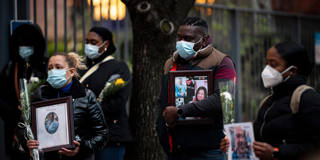The United States is not limiting COVID-19 infections enough to avoid a serious second wave of the pandemic later this year. As communities reopen and behavior patterns loosen still further, the country will be forced to face the consequences of its insufficient action to date.
CAMBRIDGE – Like surfers looking out for the next big breaker before the first one has passed, epidemiologists and public-health officials in the United States are bracing themselves for a fresh surge of COVID-19 infections later this year. The fear is that this second wave will coincide with the peak of the 2020-21 US influenza season, triggering a new flood of hospital patients in dire need of respiratory support.

CAMBRIDGE – Like surfers looking out for the next big breaker before the first one has passed, epidemiologists and public-health officials in the United States are bracing themselves for a fresh surge of COVID-19 infections later this year. The fear is that this second wave will coincide with the peak of the 2020-21 US influenza season, triggering a new flood of hospital patients in dire need of respiratory support.